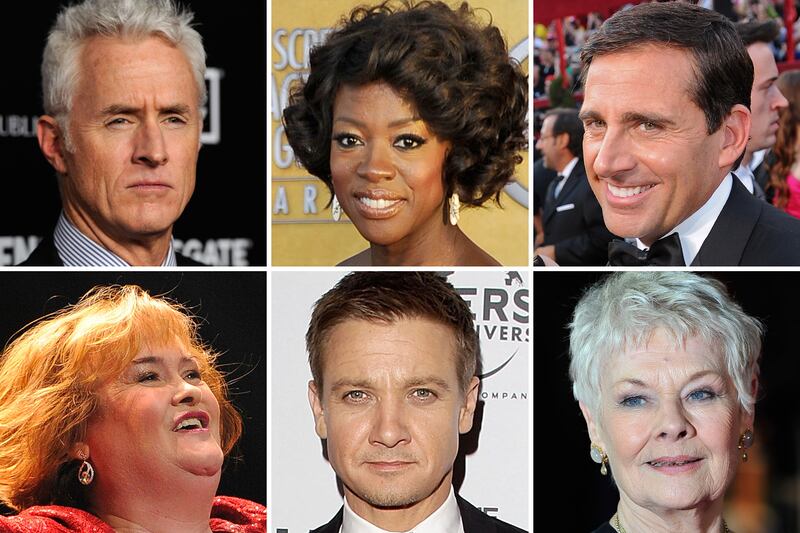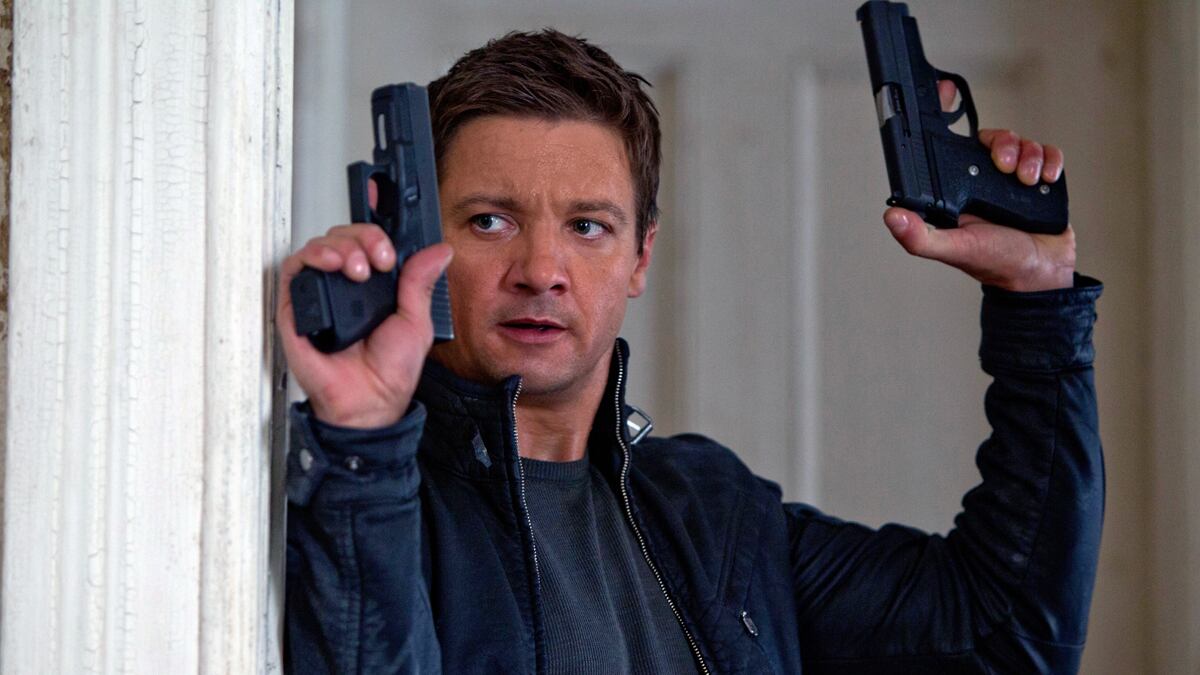When it came to the summer of 2012 at the movies, everything old was new again—despite a whiff of staleness.
There was the action packed board game, Battleship. It sank. A rebooted Spider-Man went back to high school. The rebranded Alien movie, Prometheus, lost too many viewers in space. And there were endless, additional chapters of Step Up, Ice Age, Madagascar, Men in Black—what am I forgetting? Oh, right! It was with a sense of dread that I went to see the fourth Bourne movie, recycled without its star, Matt Damon.
The buzz on The Bourne Legacy has been lackluster, even with the Oscar-caliber pedigree of its leading man, Jeremy Renner, and director Tony Gilroy. Earlier this summer, Universal looked guilty when it ceremoniously pushed Bourne’s release date back a week, to get out of the way of the abysmal Total Recall remake. Then came a reports of soft box office tracking and a series of less-than-enthusiastic early reviews. Stop reading them right now, because…
The fourth Bourne movie is actually great. It’s the best of the franchise since the original Bourne Identity bowed in 2002, when Matt Damon was still trying to prove himself as a box office draw. (Remember, Ben Affleck had all the blockbusters back then.) Instead of just another tired sequel, the new Bourne feels gutsy and reinvigorated. So with that, I’m officially crowning The Bourne Legacy the best action movie of the summer after The Dark Knight Rises. Here are seven reasons to celebrate this reboot.
1. Jeremy Renner is a superstar. This became clear to anybody—all 50 of us—who made up the meager box office of The Hurt Locker, the 2009 Oscar winner for Best Picture. Hollywood sometimes takes longer to implement the obvious, so since then, Renner has been seen in the shadow of Tom Cruise in Mission: Impossible 4 or lurking behind Robert Downey Jr. in The Avengers. In The Bourne Legacy, he gets the spotlight. Finally!

In interviews, Renner has graciously said he’s not replacing Matt Damon. This is so nice, but so untrue. Even though his character isn’t technically named Jason Bourne, he, for all purposes, is Jason Bourne. Renner plays a new spy, Aaron Cross, fending off a government agency trying to kill him, after he goes rogue, because he’s in a special category of superspy enhanced by pills and he needs more pills! OK, I’ll stop. The plot is ridiculous, but that doesn’t matter. Renner is fantastic. He might be 41, but he looks 10 years younger, with all the charisma of a headlining stripper from Magic Mike. His fighting technique rivals Batman’s. He leaps from buildings like Spider-Man. He puts a new spring in the franchise’s step. Truth be told, Matt Damon was looking kind of weary in the last Bourne movie, which felt more like a long nap. Renner comes across like a guy with something to prove, which, of course, he does.
2. The wilderness scene. This is where—spoiler alert, but it’s toward the beginning—Renner tackles a wolf with his bare hands in Alaska. If you have fond memories of reading White Fang as a child, you might want to close your eyes.
3. The best Bourne girl. The Bourne films, unlike the James Bond series, actually give its women characters something to do. Rather than being sidelined by chase scenes, they are integral parts of them. That’s why, after Franka Potente’s character died at the beginning of The Bourne Supremacy, the second movie lagged a little. For this Bourne, we have Rachel Weisz playing Dr. Marta Shearing, a scientist who survives some serious shit (I will not spoil). These sequences are dazzling and Weisz performs cartwheels: she’s vulnerable, terrified, sexy, nerdy, and badass all at once. (By the way, this is a very different action star Weisz from the one we saw years ago in The Mummy. Being married to James Bond—Daniel Craig—must have rubbed off on her.) When she teams with Renner onscreen, the two have electric chemistry.
4. Edward Norton. Yes, he’s in this movie too. He runs the secret government agency trying to kill Jason—oops, I mean Aaron—and Marta. Norton is good at playing bad; he should do it more often.

5. Manila. That’s where the movie takes our heroes, as they continue to run. I won’t tell you why the movie’s plot brings them there—the real reason they go is because the high rooftops and narrow streets are such a great backdrop for all the aerial acrobatics about to follow.
6. Thank you, Tony Gilroy. Your Bourne did not make me seasick. That was sometimes the case during the Paul Greengrass Bourne era, where his camera would shake and quake so much, I felt like I was drowning. Gilroy, a co-writer on all the Bourne films, is more of a throwback director, which comes like a breath of fresh air compared to the music-video editing of other summer blockbusters. Newsweek film critic David Ansen once compared Gilroy’s Michael Clayton to the 1974 political thriller The Parallax View. The same retro vibe imbues the new Bourne. “It reminds me of movies that I loved growing up from the 70s,” Renner told reporters at the premiere. “To me, fantasy comes from superreality, where the authenticity is the fantasy, where you get immersed into a story because of the character and the reality of the world … you don’t need CGI, you don’t need capes, you don’t need anything else to tell the story.”
7. A motorcycle helps. The Bourne Legacy saves the best for last. What a chase scene this movie has: Renner and Weisz gliding through the streets on a motorcycle, weaving past people and cars, and seemingly flying at times. Reviewing a great action scene is like reviewing a roller coaster—the wind is knocked out of you, and you’re reduced to gasping, “AHHHHHHHH, it’s so good.” But it is. AHHHHHHHH, it’s so good!





